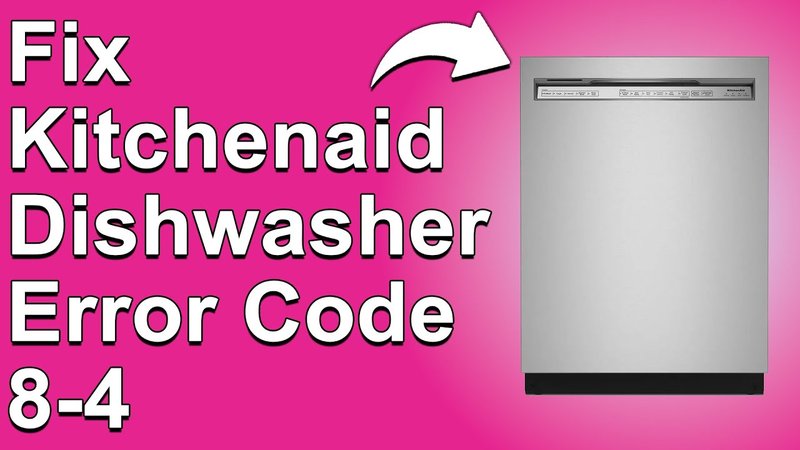
The ‘LE’ error code in KitchenAid dishwashers generally signals a problem with the motor or possibly a leaking issue. This can be akin to your car’s check engine light turning on, leaving you questioning whether you can continue to drive or if you should call the mechanic immediately. With dishwashers being integral to our daily routine, it’s important to understand what this code means for you and your dishes. Is it a minor hiccup, or could it potentially lead to something more serious?
Understanding the LE Error Code
When your KitchenAid dishwasher flashes the LE error code, it’s a hint that something’s not quite right, usually with the motor. Think of it as your dishwasher’s way of saying, “Hey, something’s up here!” The motor is essentially the heart of your dishwasher, responsible for pumping water throughout the machine. If it’s not functioning properly, you’re likely facing issues like your dishes not getting cleaned effectively or, worse yet, a halt in the machine’s operation altogether.
So why does this error code pop up? One common cause is a motor thermal overload, which happens when the dishwasher’s motor gets too hot to handle. Imagine your dishwasher running a marathon without a break — it’s bound to get overheated! Another possibility could be a problem with the wiring or a fault in the control board, similar to a miscommunication between the orchestra conductor and the musicians, leading to a cacophony rather than a symphony.
Finally, it could also be related to leaks. When water finds its way where it shouldn’t be, the dishwasher senses potential harm and triggers the error code as a precautionary measure. After all, no one wants a watery mess in their kitchen! If you notice any water pooling around your dishwasher, that’s your first clue.
Is It Safe to Use Your Dishwasher with This Error?
Given what we know, is it safe to continue using your dishwasher? Well, here’s the deal: it mostly depends on the root cause of the issue. If the error pertains to an overheating motor, continuing to run the dishwasher could lead to further damage — think of it like running a fever without resting. The longer the motor runs under stress, the higher the chance it could burn out, potentially resulting in expensive repairs or even a full replacement.
Similarly, if the issue is linked to a water leak, it’s wise to pause operation immediately. Water and electricity are one duo you don’t want to mix, much like oil and water! Running your dishwasher with a leak might cause water damage to your kitchen floor, or worse, create a risk of electrical shock.
That being said, if the error doesn’t seem to stem from these critical issues, you might consider running a diagnostic or resetting the dishwasher to see if the code clears. But caution is key; you don’t want to exacerbate a small problem into a big one. When in doubt, having a professional take a look is always the safer bet.
Steps to Address the Error Code
So, what should you do if your dishwasher begins flashing the LE error code? First off, try resetting the unit. Much like rebooting your computer, a quick reset can do wonders. Simply unplug your dishwasher for a few minutes and then plug it back in. Sometimes, a minor glitch can be resolved with this simple step.
If the error persists, inspect the area for any signs of leakage. Use your detective skills to look under and around the unit for any moisture. Finding and addressing leaks promptly can prevent further complications. If you’re comfortable, you might consider checking the motor to see if it’s running hot — just be sure to turn off the power first to avoid any electrical mishaps.
For those who aren’t particularly handy or if the error code remains stubbornly persistent, it’s probably wise to bring in an expert. A professional technician can diagnose and fix the problem more swiftly, ensuring your dishwasher returns to its dish-cleaning duties in no time. Prevention is also key, so consider regular maintenance to keep your dishwasher running smoothly for years to come.
In summary, while the LE error code can be a head-scratcher, understanding its cause helps you decide the next steps. Safety comes first, so don’t hesitate to call in backup if needed. After all, your dishwasher is an important team player in your kitchen, and ensuring it’s in top shape keeps your home running smoothly!